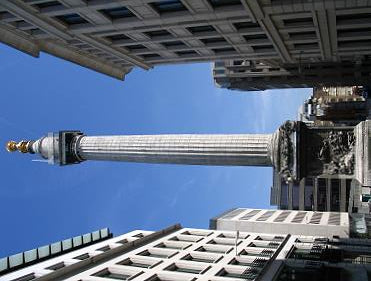The Great Fire


It is strange how two unrelated events half a world apart conjured up similar images. This month saw the reopening, after major restoration, of the Monument, a memorial commemorating the Great Fire of London (sited where else but on Monument Street in London). It’s worth a trip for the view from its new viewing platform if you can manage the steps.
On the night of September 2, 1666, a small fire broke out in a baker’s shop in Pudding Lane, London the premises of one Thomas Farrinor, baker to King Charles II of England. How the fire started is still a debating point but most believe the carelessness of a maid in not quenching the ovens was to blame. As the poor woman was one of only 4 recorded fatalities of the Great Fire it was at best a convenient truth for the Baker. A French Protestant watchmaker, Robert Hubert, confessed to having deliberately started the fire but many doubted his testimony. Even so he was later hanged at Tyburn for his “crime”.
If the cause was carelessness as seems likely, it had immediate and disastrous consequences, but perversely also spelled a new dawn for the City. Fanned by a brisk east wind the fire quickly spread through the densely packed timber framed houses lining the maze of narrow streets that were old London. Soon it was an unstoppable inferno that spread with terrifying speed, feeding on the tar and pitch commonly used to preserve the house timbers. The inhabitants at first tried to fight the fires usually using nothing more than fire buckets filled with water but the futility of the task soon had them retreating to the safety of London’s heaths.
A graphic account of the fire was recorded in the famous diaries of Samuel Pepys who observed from a safe position across the river Thames, describing it as, “a most malicious bloody flame, as one entire arch of fire…. of above a mile long. It made me weep to see it.”
At least 80% of the city was destroyed in four days before a change in the wind allowed the fire to burn itself out. The devastation accounted for over 13,000 houses, 84 churches and dozens of Company (Guild) Halls. The old St. Paul’s Cathedral was also completely destroyed and the lead from its roof was reported as “running as a stream” down the street.

However the fire had also destroyed the filthy poverty stricken streets associated with the Great Plague that had swept the City just a year earlier. The City slums were literally burned away and the associated filth and disease was sterilized by the fire. The Great Fire had done London a favour and provided the authorities with the opportunity to re-build what has become the London of today with its open areas and wide Malls.
The architect of the new city was of course Sir Christopher Wren who was also responsible for building the Monument, a slender column 202 feet high, the exact distance from its base to Pudding Lane where the fire began.
And then more than 450 years later I see the devastating bush fires in Australia also fanned by strong winds, and with it, harrowing images of desperate people attempting to douse the flames using fire buckets laden with water with the same futility. Around 1800 homes have been destroyed but when compared to the Great Fire of London the death toll is horrendous, 210 and still counting, a true tragedy of our times. Without taking anything away from the sheer courage and bravery of these homeowners and fire fighters it begs the question how such a loss of life could happen in our modern age.
Fire kills. It has no friends or favourites. Yes it can be fought but the three P’s – fire Prevention, Protection and Preparedness are its main enemies. I wonder if these weapons will be properly employed when it comes to rebuilding these shattered communities. Visionaries of the caliber of Sir Christopher Wren are required not avaricious property developers.
A final footnote on the Great Fire. In 1986 the Baker’s Company (a Craftsman’s Guild) proffered a somewhat belated apology for the Fire. Well that was nice of them given they were 320 years after the fact. The restored Monument is also, and appropriately, protected from fire by a new detection and alarm system.
Tony
